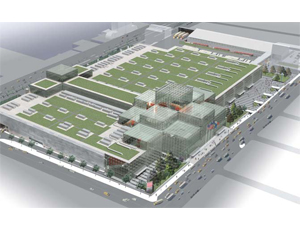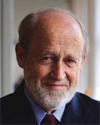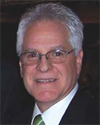With growing interest in sustainability, greater numbers of people are recognizing the benefits of becoming a LEED AP certification, with 132,052 individuals having achieved the rank at the end of June, up from 77,689 at the end of 2008.

“Within the design profession, if you cannot do a LEED building, you will lose out,” says Bruce Fowle, senior partner with FXFOWLE in New York. “We get requests for proposals asking about the number of LEED accredited professionals we have. It has caught fire.”
Eighty-five percent of the firm’s professional staff members hold the accreditation.
“There’s peer pressure,” Fowle adds. “It’s socially and professionally unacceptable to not be a LEED AP.”
Fowle’s company designed Eleven Times Square for SJP Properties of Parsippany, N.J., which seeks LEED-Gold certification, and is incorporating energy efficiencies into the renovation and expansion of the Jacob K. Javits Convention Center in New York.
“There are fewer and fewer projects, but those that have been happening have indicated a strong interest in the environmental [aspects],” he says. “Even if they are not building now, they are planning to be as environmentally responsible as then can be.”
Fowle attributes much of the interest to a greater awareness about greenhouse gases and global warming, and how buildings contribute to greenhouse gasses.
“The marketplace is becoming a driving force, particularly in the office market,” he says, citing a U.S. Green Building Council report, indicating people will pay higher rents in a LEED-rated building and it will have less turnover and lower vacancy rates. “It improves the chance of success of a project.”
Andy Topinka, president of Technical Group Services of Fairfield, N.J., and immediate past chairman of U.S. Green Building Council New Jersey Chapter, says project owners continue to want environmentally friendly and healthier buildings.
“Demand is going up even though the economy is slow,” Topinka says. “There is still an interest.”

That interest has spurred people to learn more about sustainable design.
“The profession is gearing up for what they see as an increased emphasis on energy efficiency and carbon emission reduction,” says Hillary Brown, a principal with NewCivicWorks, a New York sustainability advocacy organization. “The nearest quick fix in credibility is LEED AP. Institutional clients will look for it when they hire architects for their facilities. It’s an attribute they seek.”
Time to Train When people are busy, training sometimes falls to the back burner, but now with fewer new projects, employees have the time to attend workshops and hit the books to beef up their job skills.
“Everybody is nervous about losing their job, so that is a factor,” Fowle says.
Rick Bell, executive director of AIA New York, agrees.

“There are a lot of unemployed architects, and there are a lot of people who are under employed and aren’t as busy as they used to be,” Bell says. “People say how do I make myself more competitive when things pick up or to keep my job or get a commission.”
Accreditation also bestows a sense of accomplishment.
“They are getting more and more people who want to have it as a personal credential, because they think that enhances them as an individual,” says Charles Griffith, associate partner of Polshek Partnership Architects and co-chair of the AIA New York Chapter’s Committee on the Environment. About 30% of Polshek Partnership’s architects are LEED accredited.
Change in requirements The U.S. Green Building Council has transitioned the administration of professional accreditation to the Green Building Certification Institute. The GBCI established three levels of excellence, new eligibility requirements, and credentialing maintenance standards.
June 30, 2009, marked the last day that people could take the LEED for New Construction v2.2 and LEED for Commercial Interiors v2.0 LEED Accredited Professional credentialing exams. In their place, GBCI instituted LEED Building Design and Construction and LEED for Interior Design and Construction designations. LEEP AP exams are divided into two parts, a Green Associate exam to test general knowledge about green building practices, and a second section based on one of the rating systems, such as operations and maintenance or neighborhood development.
“There was an insurgency for becoming a LEED AP prior to July,” says F. Todd Renz, president of O,R&L Construction in Branford, Conn., and president of the Connecticut Green Building Council.
Topinka acknowledges that many people sought accreditation before the change, but notes demand for accreditation persists.
“Classes are still full,” Topinka says. “It has not dropped off.”
Useful Sources
U.S. Green Building Council
www.usgbc.org
Green Building Certification Institute
www.gbci.org

Post a comment to this article
Report Abusive Comment